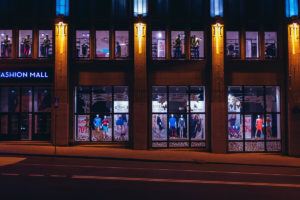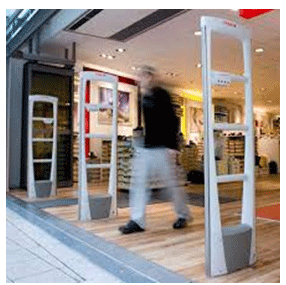 Can you believe we are in December already? This year has flown by and we’re in the home stretch. For many, many small and large businesses alike, this next month is crucial to profitability. Often times, the 4th quarter can mean you stay open for another year, or it could mean that you didn’t make enough to pay your vendors. If you think that’s not a reality, do you remember a little electronics company by the name of Circuit City? So it becomes even more important to do every single thing you can to retain as much profit as possible. That means having the right product, providing the best service and definitely making sure your money makes it to the bank.
Can you believe we are in December already? This year has flown by and we’re in the home stretch. For many, many small and large businesses alike, this next month is crucial to profitability. Often times, the 4th quarter can mean you stay open for another year, or it could mean that you didn’t make enough to pay your vendors. If you think that’s not a reality, do you remember a little electronics company by the name of Circuit City? So it becomes even more important to do every single thing you can to retain as much profit as possible. That means having the right product, providing the best service and definitely making sure your money makes it to the bank.
Holiday time brings an increase in sales, which in turns leaves you with a little (or a lot) more cash on hand than you normally would. This is great. We love to see money, right? Well, there can be a downside to all this extra green hanging around; a robbery. No one likes to think this can happen, or will happen to their store, but the reality is that it can. Criminals know this time of year means more cash in stores and it’s no secret that robberies tend to happen more frequently during the last few weeks of the year.
Last year, one of my stores were targeted very early in the morning. Thankfully, we were not open for business yet and none of my team members were hurt, but it exposed some holes in what we believed was a fool-proof procedure to deter these acts.
The first lesson is being vigilant. A good manager will always drive the perimeter of building when they first arrive. You should look for any signs of breach, or anyone who doesn’t belong in the area. If something stands out, don’t hesitate to call the local police. Better to be nothing than to walk into a robbery. Also, safety is in numbers. Managers should wait until all morning team members arrive before entering the store. This way, the store can remain locked and a manager isn’t opening the door several times throughout the morning.
Prepare for the worst. You don’t want it to happen to you, but it can. Train you managers, as well as your store team on what they should do in case of a robbery. You don’t want any heroes and you don’t want anyone to get hurt. You should constantly stress the importance of complying with the robber’s demands and getting them out of the store as quickly as possible. The very last thing you want is to have a hostage situation because the police responded while the robber was still inside. Remember, do what they say, give them what they want and get them out.
In my many years in LP, I have never seen a robbery happen in the middle of the day. Each one that took place in one of my stores happened either early morning, or late at night. At closing, a manager should head to the front of the store about 15-20 minutes prior to closing. Take a look at the parking lot. Are there any suspicious vehicles, or people hanging around? Once the last customer has exited, and it’s closing time, quickly lock your doors.
Try to avoid having team members leave the store at different times. If possible, schedule every to leave at the same time each night. That way, everyone can leave at once. You want to avoid opening/closing the door as much as possible. Robbers will stake out your store for days, or even weeks before hitting their target. If they know you open the door several times after close, you could set yourself up for a robbery attempt. By leaving all at once, in a group, you make the robbery less appealing to the criminal.
There’s no secret formula or magic wand that can be waved to completely prevent a robbery. You have to assume that at any time, it can happen to you. The best thing you can do is to work robbery prevention into your daily routine and most importantly be prepared for it. The last thing you want is to have your team faced with this reality and not know what to do. A simple conversation about expectations can very well be the difference between life and death.
 In the previous article, I gave some great tips on how to prevent and prepare for a robbery. Like many things, it’s impossible to provide a solution that is all encompassing. After I penned that article I couldn’t help but think that there was more that I could share; more that I should share. I draw on over a decade’s time spent in the LP field and this is one of those topics that I just can never stress enough to my store managers. So, what else can you do to limit a robbery and/or cash loss?
In the previous article, I gave some great tips on how to prevent and prepare for a robbery. Like many things, it’s impossible to provide a solution that is all encompassing. After I penned that article I couldn’t help but think that there was more that I could share; more that I should share. I draw on over a decade’s time spent in the LP field and this is one of those topics that I just can never stress enough to my store managers. So, what else can you do to limit a robbery and/or cash loss? It’s official folks. It’s December and the year is almost over. It also means that you’ve probably hired some additional help around the store. Whether they be temporary, part-time or full-time employees, they all have one thing in common; they have the potential to steal from you. I hate to sound so cynical, but I’m a realist. With December historically being the biggest month for internal theft, I’d thought I’d share some of my tips on how to spot a potential dishonest employee.
It’s official folks. It’s December and the year is almost over. It also means that you’ve probably hired some additional help around the store. Whether they be temporary, part-time or full-time employees, they all have one thing in common; they have the potential to steal from you. I hate to sound so cynical, but I’m a realist. With December historically being the biggest month for internal theft, I’d thought I’d share some of my tips on how to spot a potential dishonest employee.
 From
From 
 The holiday season is officially under way and your stress level is about to go into overload. When we’re overly stressed bad things happen to us mentally, emotionally and physically: headaches, digestive issues, eating too much, concentration problems, decreased impulse control, increased emotional sensitivity, poor planning ability and sleep disturbances.
The holiday season is officially under way and your stress level is about to go into overload. When we’re overly stressed bad things happen to us mentally, emotionally and physically: headaches, digestive issues, eating too much, concentration problems, decreased impulse control, increased emotional sensitivity, poor planning ability and sleep disturbances.
 Step back and take a hard look. Or better yet ask someone you trust to do that. A friend, another business owner…… they really do not need to have any special skills. You should look at your store from the prospective of the shoplifter. If you were going to steal, how would you do it? Do you have dark areas, high shelving, hidden spots that would make the thief comfortable? Is your store unkempt, dirty and not stocked in an organized way? Shoplifters are attracted to these environments. If you are presenting that look, then the shoplifter probably knows you are not able to keep up or simply do not care. This will also breed more shoplifting as word gets around that YOUR STORE is an easy mark.
Step back and take a hard look. Or better yet ask someone you trust to do that. A friend, another business owner…… they really do not need to have any special skills. You should look at your store from the prospective of the shoplifter. If you were going to steal, how would you do it? Do you have dark areas, high shelving, hidden spots that would make the thief comfortable? Is your store unkempt, dirty and not stocked in an organized way? Shoplifters are attracted to these environments. If you are presenting that look, then the shoplifter probably knows you are not able to keep up or simply do not care. This will also breed more shoplifting as word gets around that YOUR STORE is an easy mark.
 Are they asleep at the switch? Do they care? Have you trained them how you want the shoplifting deterrence program in your store to work and what their roll in it is? This is not something you can put off. It’s like saving money in an account. You got to start. If you are one of Loss Prevention Systems Customers already, then you know this. That is why we conduct live, personalized shoplifting prevention and loss prevention training for our customers.
Are they asleep at the switch? Do they care? Have you trained them how you want the shoplifting deterrence program in your store to work and what their roll in it is? This is not something you can put off. It’s like saving money in an account. You got to start. If you are one of Loss Prevention Systems Customers already, then you know this. That is why we conduct live, personalized shoplifting prevention and loss prevention training for our customers.  This is the best time for retailers. We make a good chunk of our profits during the last 3 months of our fiscal year. Walk into any major retailer right now and you’ll already see a litany of holiday themed gifts, home décor and all things red and green. We also tend to beef up our staff this time of year as well. Some of us hire part-time works, some may even add a full-time position or two and a great many of us will employ temporary workers. The threat of employee theft also peaks around this time as well.
This is the best time for retailers. We make a good chunk of our profits during the last 3 months of our fiscal year. Walk into any major retailer right now and you’ll already see a litany of holiday themed gifts, home décor and all things red and green. We also tend to beef up our staff this time of year as well. Some of us hire part-time works, some may even add a full-time position or two and a great many of us will employ temporary workers. The threat of employee theft also peaks around this time as well. 